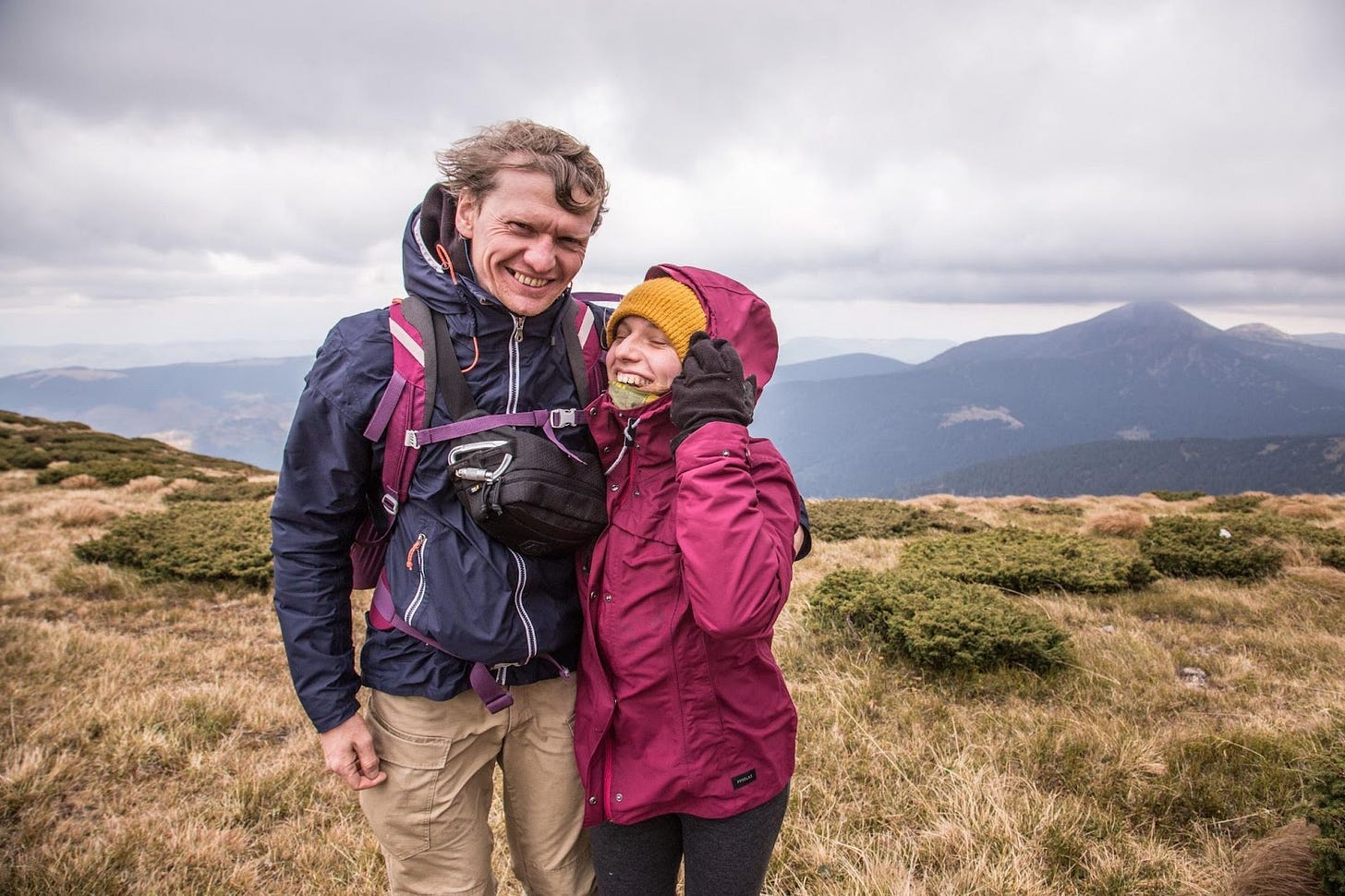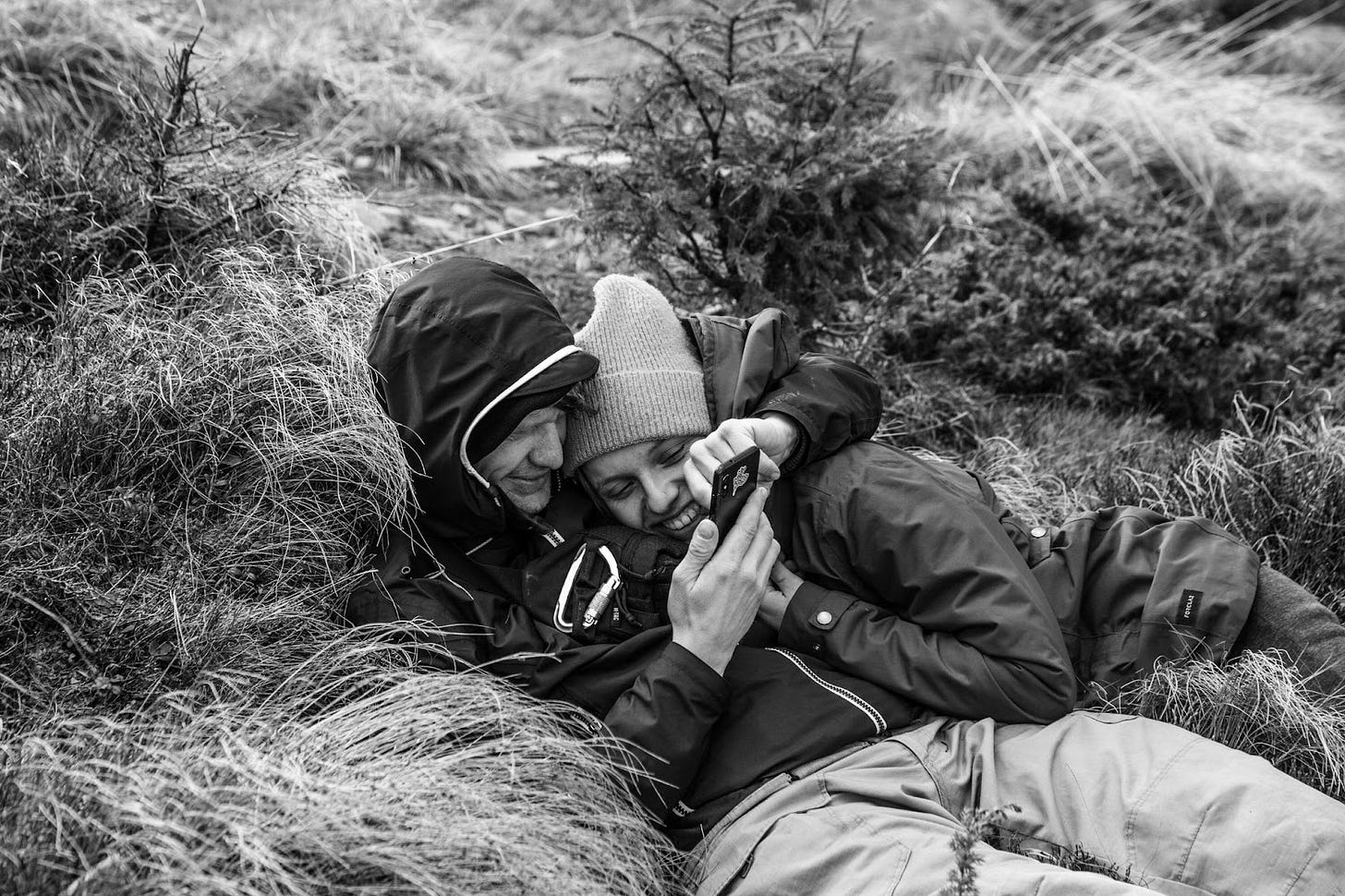Dead journalists.
In memory of those who were killed in this war, and in honor of Ukraine’s national Journalist’s Day this week, this is our profile of the life and death of Maks Levin.
Editor’s Note: We cannot mince words: ‘dead journalists’ is a striking headline. It’s also the terrible reality of this war. Thank you for reading us, and in this way, supporting the dangerous work we do in a far off place.
"Every Ukrainian photographer dreams of taking a photo that will stop the war," was one of Maks Levin's most famous sentences.
Unfortunately, he never did, because Russia killed him.
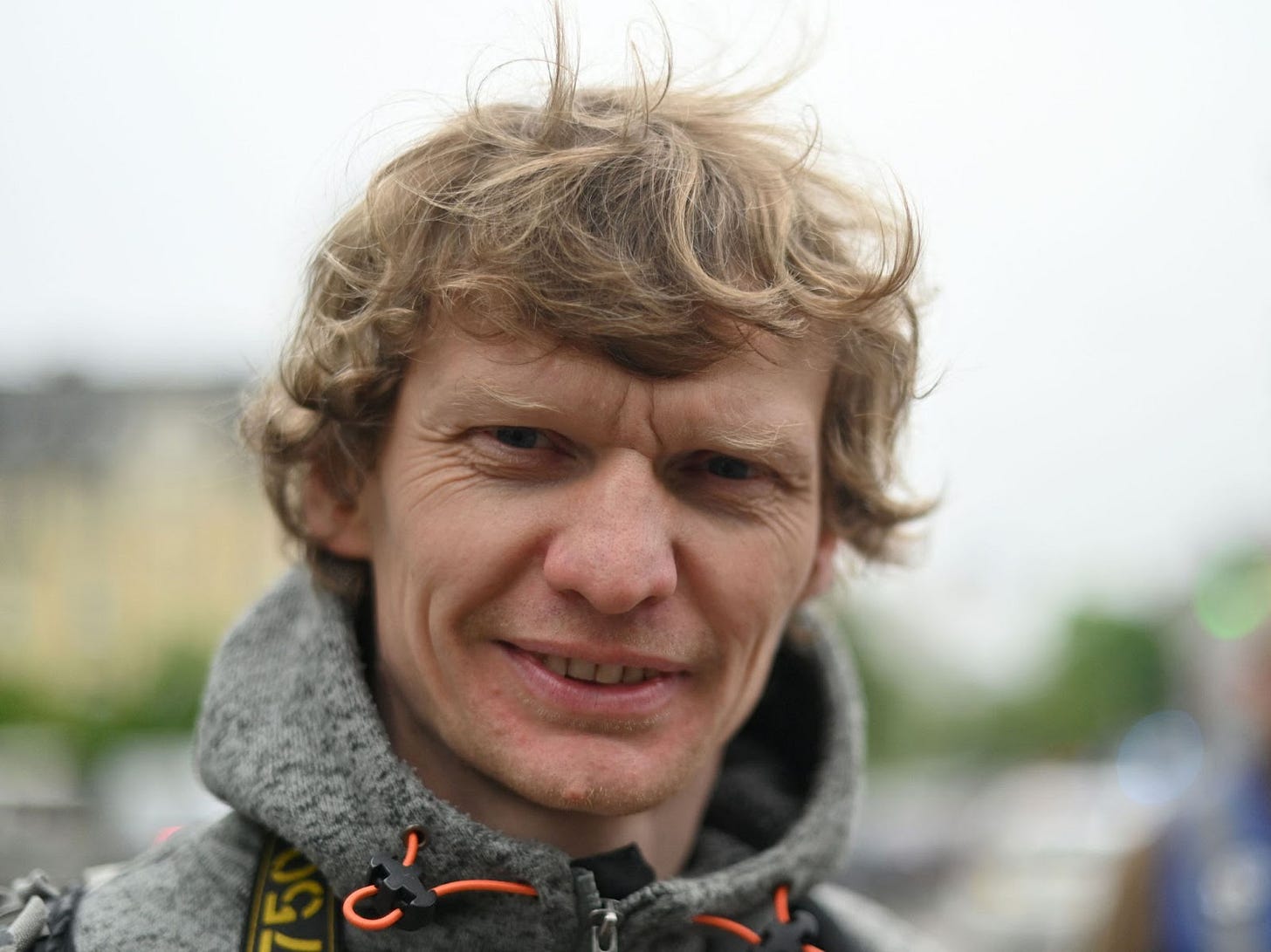
Maks was one of the few journalists who covered the war for eight whole years, starting in 2014. So on February 24th, 2022 there was no question for him whether to document the full-scale Russian invasion.
On March 13, Maks Levin together with soldier Oleksii Chernyshov, a former photographer, went by car to the village of Huta-Mezhyhirska, near the frontlines. The pair were not far from Kyiv, as the Russians advanced on the capital. They got out of the car and walked towards the scenes of combat, but then disappeared.
Two and a half weeks later, the police found the body of Maks Levin – the Russians had killed him with two shots.
This week Ukraine celebrates the Day of the Journalist. Due to the full-scale war, some have left their usual professions and joined the Ukrainian Armed Forces, while others, with pen or camera in hand, are documenting the war crimes of the Russians in Ukraine.
According to the Institute of Mass Information's Monitoring of Russian Crimes Against Journalists and Media, Russia has committed almost 600 different crimes against journalists and media in Ukraine during the two years of full-scale war. These include murders and kidnappings of media workers.
Since the beginning of the full-scale invasion, 81 media workers have been killed. 10 while carrying out journalistic activities, while 71 journalists died as a result of Russian shelling.
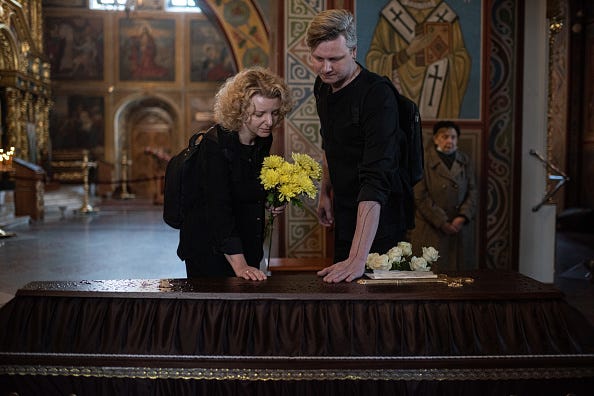
For example, Vira Hyrych of Radio Liberty: she died after a Russian rocket hit her house.
Or Iryna Tsybukh "Cheka", a media personality from Suspilne, who became a paramedic after the full-scale invasion. She died on May 29, 2024.
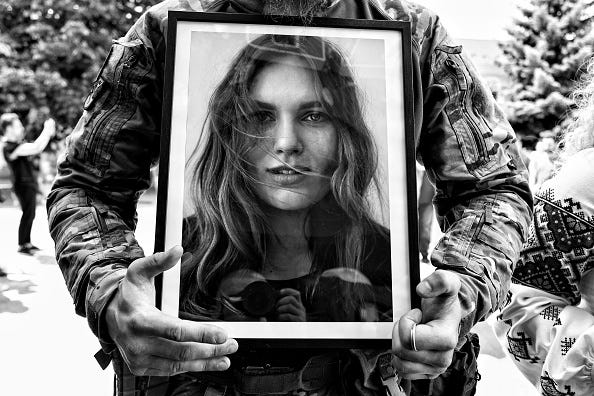
Oleksandra Kuvshynova was shot dead along with Pierre Zakrzewski in the village of Horenka, Kyiv region on March 14, 2022. Oleksandra was a journalist, fixer and producer for Fox News.
All these cases make it clear: Russia kills and tortures not only Ukrainians who defend their country, not only those who simply live peacefully in Ukraine, it kills those who make the truth available to the public. Russians want to live in a reality where only tyrants decide what is true and what is not.
With this story, The Counteroffensive honors the memory of the journalists who lost their lives to make the world aware of the war.
Maks left behind his girlfriend, Zoriana Stelmakh. "I lost the love of my life, a part of my soul, my dreamed future,” she recalled about her beloved. “But Maks left me his people, who were there for me in the most difficult times and who are now by my side and support me.”
Zoriana is a volunteer and photographer, just like Maks. Their story started in April 2021.
"A mutual friend of Maks invited me to go kayaking with him in the Zhytomyr region, where Maks had a house. So I went, and that's when everything started," Zoriana recalled.
Their story didn't last long. But despite this, Maks and Zoriana understood and supported each other perfectly and planned their future together.
"We wanted a house in the Carpathians with sheep and children. We wanted to travel, we thought about a project for camps for parents and children, or a place for veterans to rehabilitate," Zoriana said.
However, as winter approached, the lovers began to realize that there was going to be a big war, so they talked about "what if".
For Maks, the war started long before February 24, 2022. It began eight years earlier, in 2014.
"Maks was fair and wanted justice, so he also perceived the events on the Maidan not just through a lens, but as a responsible citizen who also wanted change," Zoriana said.
First he was at the Revolution of Dignity, and then he went to work on the war, taking photographs throughout. His friends say it was important for Maks to show what was really happening, to capture a moment in history. So, in 2014, he found himself in the Battle for Ilovaysk.

That was an unsuccessful Ukrainian operation in the Donetsk region, near the city of Ilovaisk, in which 1,200-1,300 Ukrainian soldiers were surrounded. The Ukrainian military tried several times to break through the encirclement. However, all attempts failed.
The Ukrainian command tried negotiating with the Russian side to get the soldiers out. They agreed on a route for the withdrawal of the Ukrainian forces through a "green corridor".

But the corridor became a trap for the Ukrainian military: Russian troops opened fire, shooting at the Ukrainian convoys.
368 Ukrainian soldiers were killed in the battle, more than 250 were killed while leaving the corridor. More than 400 soldiers were wounded, and about 300 were taken prisoner. Another 18 are still missing.

Maks managed to escape from the encirclement in Ilovaisk in a car that he drove himself. His friends recall that the drive itself took 30-40 minutes, but at the time it seemed like an eternity. Maks’ was the only car to leave that day.
"He could have been killed or captured. For Maks, what he experienced in Ilovaisk was a great shock that greatly influenced his future life," said Lina Kushch, Maks' friend and first secretary of the National Union of Journalists of Ukraine.

Maks' loved ones remember him fondly, and keep his spirit alive. They say that Maks always told the truth, did not tolerate injustice, and stood firm in his beliefs, which often led to conflicts even with his close family and friends. But that is also why he was loved.
“He also always loved to eat and in any situation, he would try to find something to eat, although he was always thin and tall,” Zoriana recalled.

After the full-scale invasion broke out in 2022, Maks became the first correspondent to film the aftermath of the battle for Kharkiv.
Then Maks returned to the Kyiv region to document the fierce battle for the capital city.
Maks often filmed using a drone, thereby seeing things that others could not. He could see new details about the movement of Russian troops, or the deployment of heavy equipment.
This is exactly what happened in the forests near Huta-Mezhyhirska. Maks was filming there the day before and he saw in the villages that the Russians had deployed their artillery in large numbers.
"But the drone was jammed by electronic warfare and fell," Zoriana said. Maks went out to go and find the drone, which included all the critical videos and photos, accompanied by Oleksii Chernyshov, a soldier and former photographer. The pair left their car and walked toward the village of Moshchun. But they were never heard from again.
"During the large-scale operation, we had an agreement that we would write to each other every 2-3 hours to say that everything was okay," Zoriana recalled.
But there was no information. Zoriana began to involve Maks' friends, looking through volunteers and the military who were on the ground. She looked through all the Russian telegram channels that showed specific battles in that area and where they posted the dead or captured.
“On April 1, in the morning, around 9 o'clock, Maks' friends came to my house. They came in, at first they didn't know what to say, I started making them coffee, but they made me sit down, and one of them said, ‘Zoriana, we found Maks. Maks' body,'” Zoryana said.
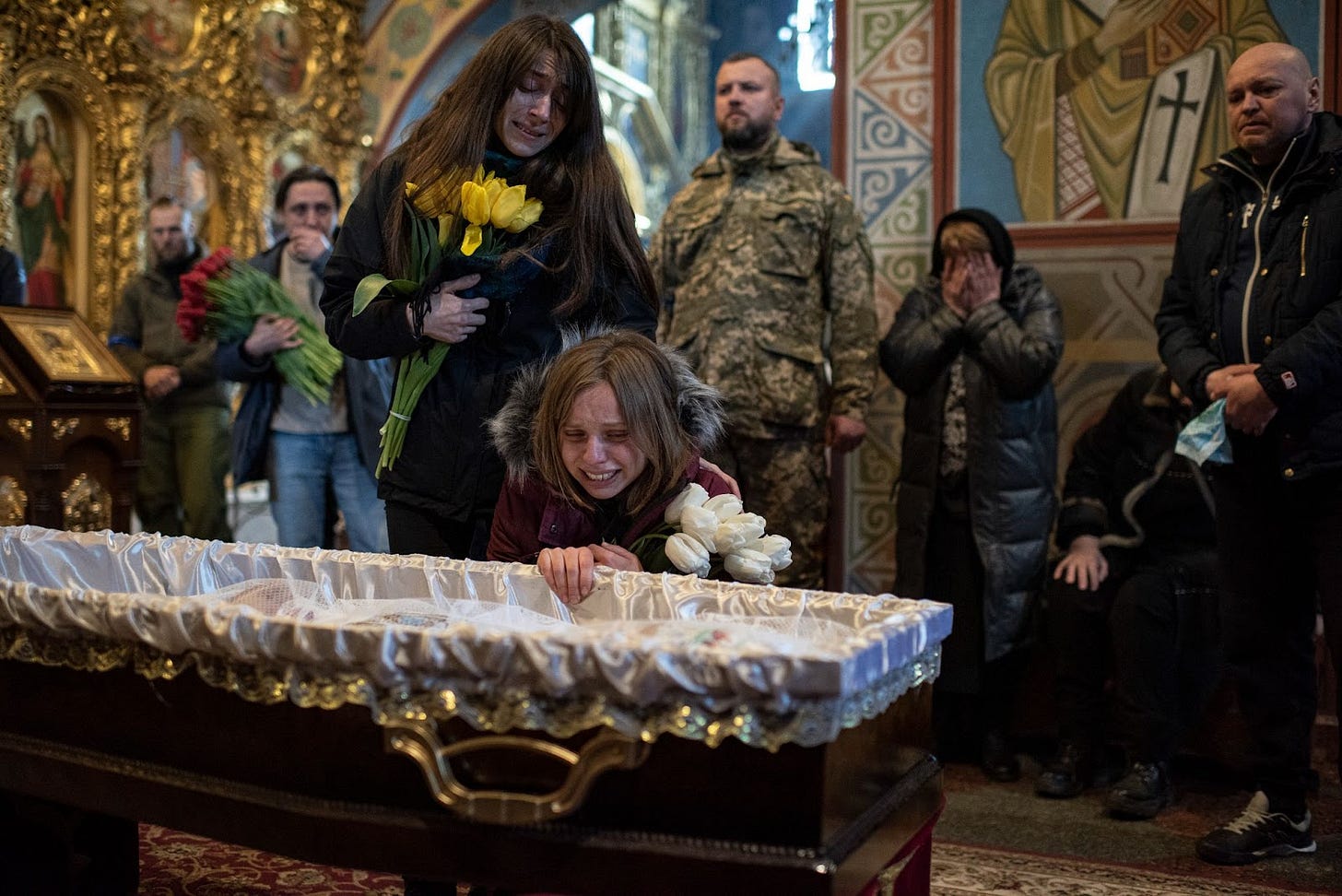
The international organization Reporters Without Borders conducted an investigation. They found 14 bullet holes in Maks' car, and several bullets, as well as Chernyshov’s identity card at the scene. They also found several items with possible traces of DNA, indicating the presence of Russian military personnel near the place where Maks Levin and Oleksii Chernyshov were killed.
According to the Secretary General of Reporters Without Borders, Christophe Deloir, the analysis of crime scene photographs, on-site observations and recovered physical evidence clearly pointed to a shooting, which could have been preceded by interrogation or even torture.

Maks' friends and family believed he was everywhere. He lived his life in all its manifestations. And when things went wrong, he had a certain catch-phrase he liked to use.
When his father was making Maks' headstone, Zoriana asked him to add this phrase.
"On the back of his tombstone, there are mountains, which he loved very much, and the inscription, 'Life is confusing,'" Zoriana said.
AFTER THE PAYWALL: A Ukrainian propeller plane, used for training, shot down a Russian drone this week! And in reporter’s notebook, Myroslava takes you inside what it’s like to live without power amid constant blackouts.
Keep reading with a 7-day free trial
Subscribe to The Counteroffensive with Tim Mak to keep reading this post and get 7 days of free access to the full post archives.





